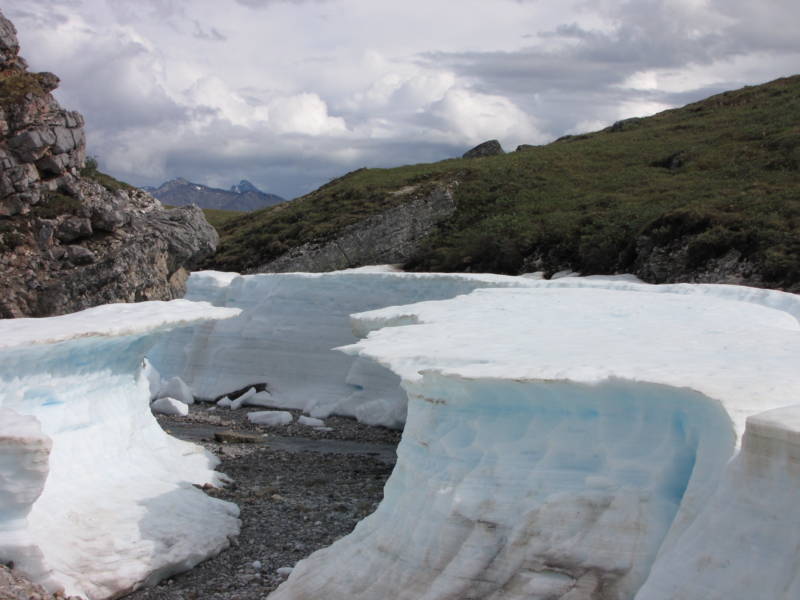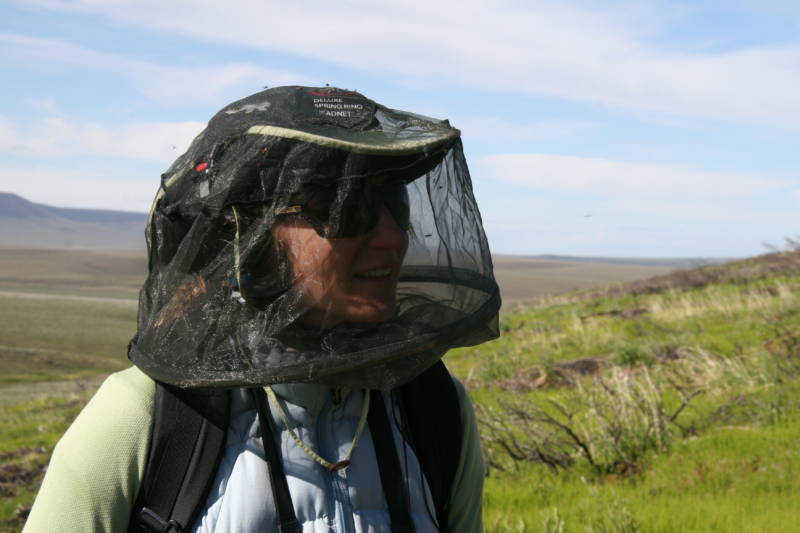The Arctic is warming, and what happens there has consequences for California.
Take in the companion radio feature and slide show at The California Report weekly magazine. Gretchen’s slide show also appears below.

During the two weeks I spent in the Arctic at Toolik Field Station this summer, there was a lot of talk about positive feedbacks and how what happens in the Arctic can affect the entire planet. Thawing permafrost, which I explore in my radio piece for The California Report, is cause for some of the greatest concern.
Another is the loss of sea ice. Mean summer temperatures in the Arctic have risen about three degrees Fahrenheit since 1960, and summer sea ice is shrinking more than 11% per decade. This year ranks third for the minimum Arctic summer sea ice extent since satellite record-keeping began in 1979. 2007 and 2008 hold the records, and 2009 is in fourth place.
Shrinking sea ice matters not just because it’s an indication of warming, but also because it can accelerate it. Sea ice keeps polar regions cool by reflecting sunlight and heat, which helps moderate the global climate system. When sea ice isn’t there, the sun hits the surface of the Arctic Ocean instead. The ocean is relatively dark in color, so instead of reflecting 80% of the sunlight, it absorbs 90%. This heats up the ocean and the Arctic–which, of course, melts more ice.
Another potential feedback scientists are looking at is “shrubification” (try tossing that one into a conversation), but whether it’s a positive or negative feedback remains up for discussion. As the Arctic warms, the boreal forest is moving north and the tundra itself is changing. The vegetation is shifting to more woody and leafy plants, like birch, and this change could have varying effects on the climate system. On one hand, more leaves mean more photosynthesis, which could mean that the Arctic vegetation could increase its CO2 uptake, acting as a carbon sink by absorbing CO2 from the atmosphere. On the other hand, increased leafy vegetation would make the landscape darker, which would make it absorb more heat, and that warming could potentially offset any effects of increased CO2 uptake. Also, the woodier, leafier plants can create protected areas where snow can gather, insulating the ground and keeping it warm. This too, could have warming effects that offset any additional photosynthesis.
“The takeaway is that it’s complicated, and there’s a potential for large positive feedbacks if things continue in the direction they’re going,” said Donie Bret-Harte, a biologist at the University of Fairbanks and the Associate Field Director at Toolik. “And those large positive feedbacks are things that we won’t be able to control.”

Bret-Harte said that some scientists are concerned that the Earth may pass a tipping point, and then it won’t matter how much humans recycle their waste or invest in renewable power or reduce their emissions from burning fossil fuels. The positive feedback loop will take on a life of its own.
“It’s important to remember that these natural feedbacks that come from melting ice and snow and permafrost are not things we can legislate a solution to,” she said.
“If, they start going, and things get warming, and everything starts to thaw, you can’t say, ‘Well, let’s have a treaty and we’ll stop the thawing,’ because that won’t happen.”
One of the positive feedbacks that scientists are most concerned about in the Arctic, is thawing permafrost, which I explore more in-depth in my radio feature. With that is a slide show from my reporting trip to “The Valley of the Thermokarsts,” a region on the North Slope of Alaska’s Brooks Range, where researcher Andrew Balser digs into the permafrost for clues about why these areas where chunks of permafrost thaw, form where they do.
One thought on “Arctic Tipping Points Affect World Climate”
Comments are closed.

GMU investigating climate “skeptic” / hockey stick critic Edward Wegman – whose Wegman Report was cited by Va’s Cuccinelli – for plagiarism
http://wapo.st/ch8bOx